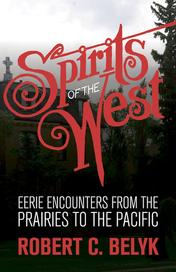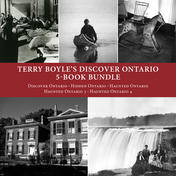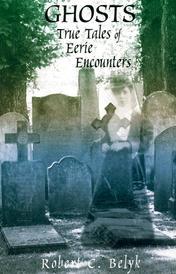Unexplained Phenomena
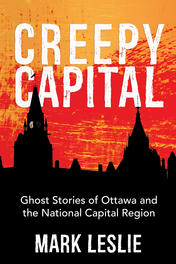
The Grant House at 150 Elgin
On a chilly Halloween eve in 2014, just days prior to the grand re-opening of Beckta Dining & Wine, owner Stephen Beckta drank champagne from a 140-year-old glass that once belonged to the Grant family, who used to live at that residence.
When questioned as to whether he felt concerned regarding the stories he had heard about the building’s history and the alleged spirit that still resided in the building, Beckta shrugged with a laugh and said: “Not at all.”
But not everybody else is so brave in their approach.
The building at 150 Elgin Street was originally built for Doctor James Alexander Grant in 1875, designed by Bradish Billings Jr. The home, considered a mansion, would have cost approximately $11,000 to build at a time when the average home’s cost was less than half of that.
Born on August 11, 1831, in Inverness, Scotland, James Grant came to Canada not long after his birth when his parents settled in Glengarry, Ontario, about an hour’s drive south-east of Ottawa. There, Grant’s father set up a medical practice and established himself as a one of the region’s most distinguished physicians. Grant followed in his father’s footsteps by receiving his undergraduate degree at the University of Queen’s College (Queen’s University) in Kingston, Ontario, then moved on to study medicine at McGill College in Montreal, Quebec. He became a medical doctor in 1854 and established a practice in Ottawa. Grant married Maria Malloch in 1856 and the two had a dozen children together.
Further following in his father’s manner, Dr. James Alexander Grant ran a very successful medical practice. Due to his renowned skills and relentless work ethic he became known and sought out by many of the more prominent members of the local community.
Grant published several articles in medical journals in Canada and England and his vast interest and knowledge in the scientific fields led to his role as a charter member of the Royal Society of Canada. In addition, he served as president of the College of Surgeons on Ontario and the Mechanics’ Institute and Athenaeum of Ottawa. Grant also served as the official physician for the Governors General from 1867 to 1905.
Grant also became involved in the political scene. He served as a Member of Parliament for the Conservative Party between 1867 and 1874, as well as between 1893 and 1896.
After saving the life of Queen Victoria’s daughter, Princess Louise, after her sleigh accident near Rideau Hall, Grant was knighted “Sir” James Grant and he was awarded the Most Distinguished Order of St Michael and King George (KCMG). Grant died on June 5, 1920, after having lived at his Elgin Street home for nearly half a century.
Given both the status that he held as well as the long-time association with the building, it’s no wonder that when tales of odd and eerie occurrences started to be reported that people’s thoughts turned to Sir James Alexander Grant. Perhaps Grant’s role as a physician — which included stories that the basement of the residence at 150 Elgin was used as a morgue — has been a factor in some of the ghostly tales that are shared about the building.
Though the tales didn’t start until the thirty-seven-year run of a very successful restaurant known as Friday’s Roast Beef House, the building itself has survived a significant number of changes.
After the Grant family vacated the building, it was purchased by the University of Ottawa’s University Club before the 1930s. In the late sixties and early seventies, highway construction projects threatened the building, and in 1974 the city came under attack for what was described as its lack of interest in preserving a historic property. A proposal to bring a sixty-bed youth hostel to the building arose, but never came to fruition. What finally took residence in the building was a restaurant known as Friday’s Roast Beef House, which occupied the building from 1972 to 2009.
It was during that era when most of the tales started to come out alluding to a ghost within the building’s walls.
The majority of sightings and ghostly encounters have taken place on the second- and third-floor hallways. Well after the building had been closed and almost empty, restaurant staff reported hearing the distinct sound of footsteps descending the stair only to witness that stairway completely empty.
Both patrons and staff have shared stories of being shoved or pushed by unseen hands, some of whom have reportedly fallen sideways over the banister. In each case, the person who fell claimed the sensation of unseen hands pushing them. Members of the Haunted Walk of Ottawa shared a tale in which a woman who had been on one of their tours claimed that exact thing happened to her before the tour guide had a chance to share any stories about the building. The unseen presence responsible for these actions has also knocked trays mysteriously out of the staff’s hands.
Restaurant staff have also reported several occasions where after they had closed for the night they might hear the sound of laughter echoing in from the empty piano bar, or hearing their name being called out when there was nobody else around.
There was one particular table on the second floor that seemed prone to icy cold breezes and objects on the table were reported to have moved entirely of their own volition. Cliff Scott, the author of Ottawa Stories: Trials & Triumphs in Bytown History, decided, after having researched the building’s history and the stories about it, in particular that one table on the second floor, to muster the courage to sit there with his wife for dinner one evening. Scott reported feeling nothing other than a little bit of trepidation, as well as the eyes of the other patrons, who were likely all there waiting to witness something supernatural.
The second floor seems to have been the location at the center of the ghostly tales. And whispers are still shared about the spectral image of an elderly man seen sitting at a second-floor window well after the restaurant was closed and all staff had gone home.
Among the most eerie of incidents to have been reported at 150 Elgin when it was Friday’s Roast Beef House are the stories of staff and guests who have described hearing the odd sound of some unseen person breathing heavily right next to them. The combination of wheezing and hacking cough is a consistent description, which ties in quite interestingly to the fact that Sir James Alexander Grant had been a sufferer of severe asthma for most of his life.
Stephen Beckta, the aforementioned restaurateur and owner of Beckta Dining & Wine, has begun the latest chapter of this historic building on the solid footing of creating something new and unique while taking great care to both respect and preserve history. “This is a legacy project that will outlive us by far,” Beckta said in an interview with the Ottawa Citizen.
Beckta and Peter Weiss, project manager for PCL Construction Company, put together a time capsule, which includes a history of the legacy building, an outline of the design of the twenty-three-storey tower that now adjoins the building, an historic letter from 1932 that was found in the home, and one of the crested Grant family glasses that Beckta drank champagne out of while celebrating the pre-opening of his gorgeous new restaurant. The capsule is sealed in a back wall of the building with a glass plaque visible from the Winter Garden atrium that connects the historic building to the newly constructed tower. Etched on the glass is a line from the late Bob Marley: “In this great future you can’t forget your past.”
“I told Dr. Grant that we were going to take good care of his house,” Stephen Beckta said in an interview with Danika Grenier, digital content manager of Ottawa Tourism. “And ever since then, everything seems to have been going swimmingly. So if there is a ghost, he likes us in this space.”
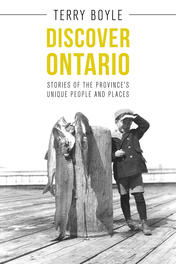
Fishing
At some time in the first quarter of the nineteenth century someone developed commercial fishing on Georgian Bay. The introduction of fishing to the Thirty Thousand Islands region was achieved through the natural extension of operations further down the Great Lakes.
Georgian Bay fishery grew in time to be the greatest source of lake trout and whitefish on all the Canadian lakes. The east side of the bay, with its deep water and sandy shoals, suited these fish well. In the 1850s, Georgian Bay harvest was upwards of a thousand barrels annually. When the railroad reached the south end of Georgian Bay, circa 1860, a more direct route to market was opened, and Collingwood, Meaford, and Owen Sound became the major fishing ports of Georgian Bay.
The expansion of the fishing market prompted more vessels to sail out each spring to the various fishing grounds in the bay. The men who fished some distance from home built a fishing station on the outer fringes of the Thirty Thousand Islands. The largest station was at the Bustard Islands. There were others at the Minks, the Snakes, and Champlain Island. These were sizeable summer colonies, made up of a number of fishermen and their families.
Improved transportation made it possible to market fish in very fresh condition. United States buyers sent schooners on regular rounds to collect the fish at the stations, packing them in ice in great wheeled boxes with a capacity of half a ton, that could be rolled on and off the schooners. One of the best available descriptions we have of the fishing industry in the nineteenth century is contained in the book entitled The Georgian Bay, written by C.L. Hamilton in 1893. After a sailing excursion on the bay he stated, “There were then over 400 men engaged in fishing in Georgian Bay, and equipment included 150 boats, 15 tugs and one and a half million yards of nets. An outfit for two men, a boat and sails, and three gangs of nets was valued at around $1100. In a season, these men would take perhaps twenty tons of fish, for which the buyer’s agent would pay seventy dollars to eighty dollars a ton. ” Mr. Hamilton also recorded that there was a small trade in fish oil at the time.
In the 1930s the sea lamprey entered Lake Huron and destroyed the lake trout population there. At first the Georgian Bay fish seemed to resist the invader from the Atlantic, but by 1960 there were no trout left in the fishing grounds. Other fish were attacked by the lamprey, the most important of them the whitefish. In 1959, the total catch amounted to only 14,515 kilograms of fish.
Large-scale commercial fishing in Georgian Bay came to a close. Today there are still a few commercial fishermen working their nets. However, when a licensed fishermen retires the government buys back his or her licence and usually does not reissue it. Therefore, the commercial fishermen are becoming a dying breed, just like the fish themselves. More questions need to be asked of our politicians regarding the restocking and current levels of fish in the Great Lakes. Restaurants operating in our tourist destinations in Georgian Bay never know if the commercial fishermen will be able to fill their orders or what will happen when the last commercial fisherman disappears. Their businesses may very well vanish like the fishermen and the fish before them.
